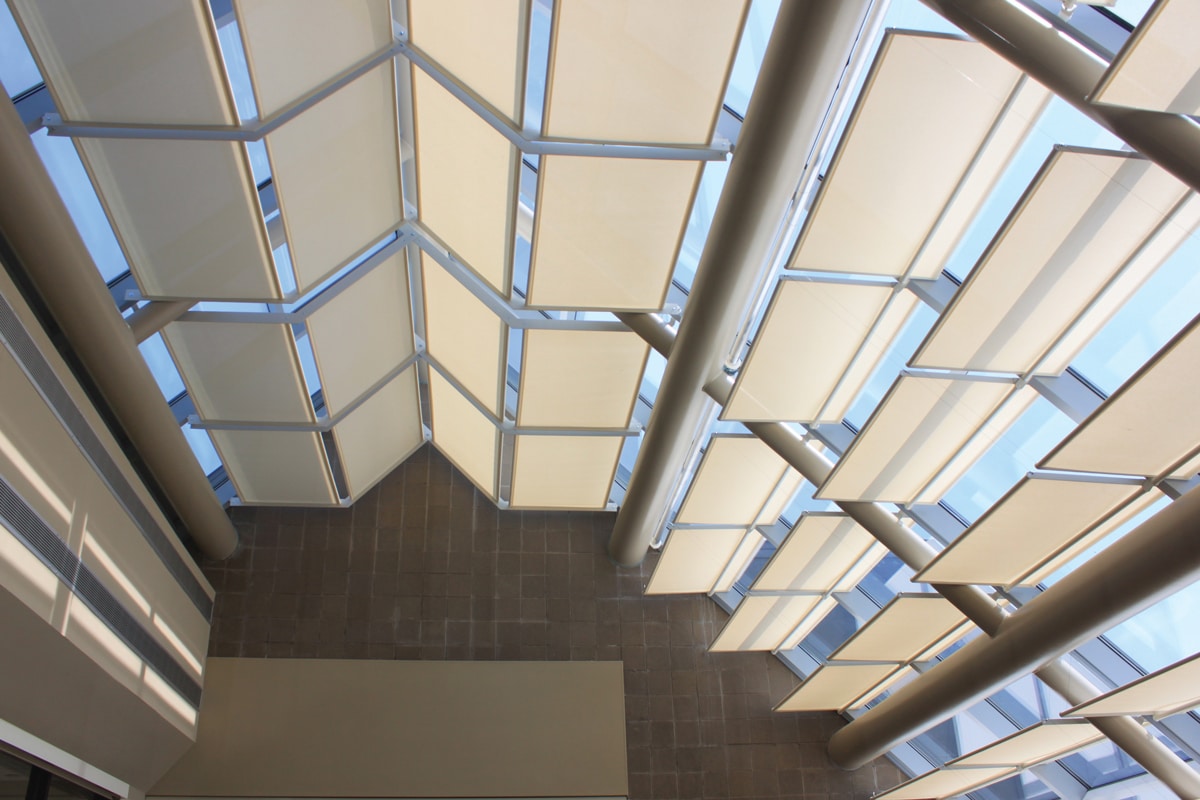
[Photo: Courtesy of Indoor Sky]
Indoor Sky has the solutions to block heat and allow the entry of glare-free daylight, all while being aesthetically pleasing.
Traditionally, window treatments have served two purposes: shade and privacy.
It’s essential to prevent outsiders from seeing what they shouldn’t, of course, and reducing glare is a must. But as for how traditional treatments achieve these goals? It’s a high price to pay. Because in the pursuit of shade and privacy, a whole lot of mood-enhancing, energy bill–reducing daylight is shut out.
“Once you deploy the shade, whether it’s a blind, roller shade, or even drapes, they all do one thing: They lose the benefit of the daylight as soon as they are deployed to block the heat gain,” says Paul Moulton, president of Indoor Sky.
Moulton was tired of the status quo. So he set out to find another way—a way to prevent solar heat gain, eliminate glare, and ensure privacy while simultaneously tapping into the power of one of our most valuable resources: natural daylight. Thus, Indoor Sky’s Dayliter Shading System was born. The Dayliter combines roller shades with a three-dimensional lightshelf that can be adjusted to any configuration to provide full light management. Its modern fabrics block out heat, while the lightshelf reflects daylight onto the ceiling from which it’s distributed deeper into the room.
Since Indoor Sky’s products hit the market in 2015, they’ve been revolutionizing the way health care facilities, banks, schools, and spaces of all kinds manage daylight. Across every project, the window solutions achieve the same five benefits.
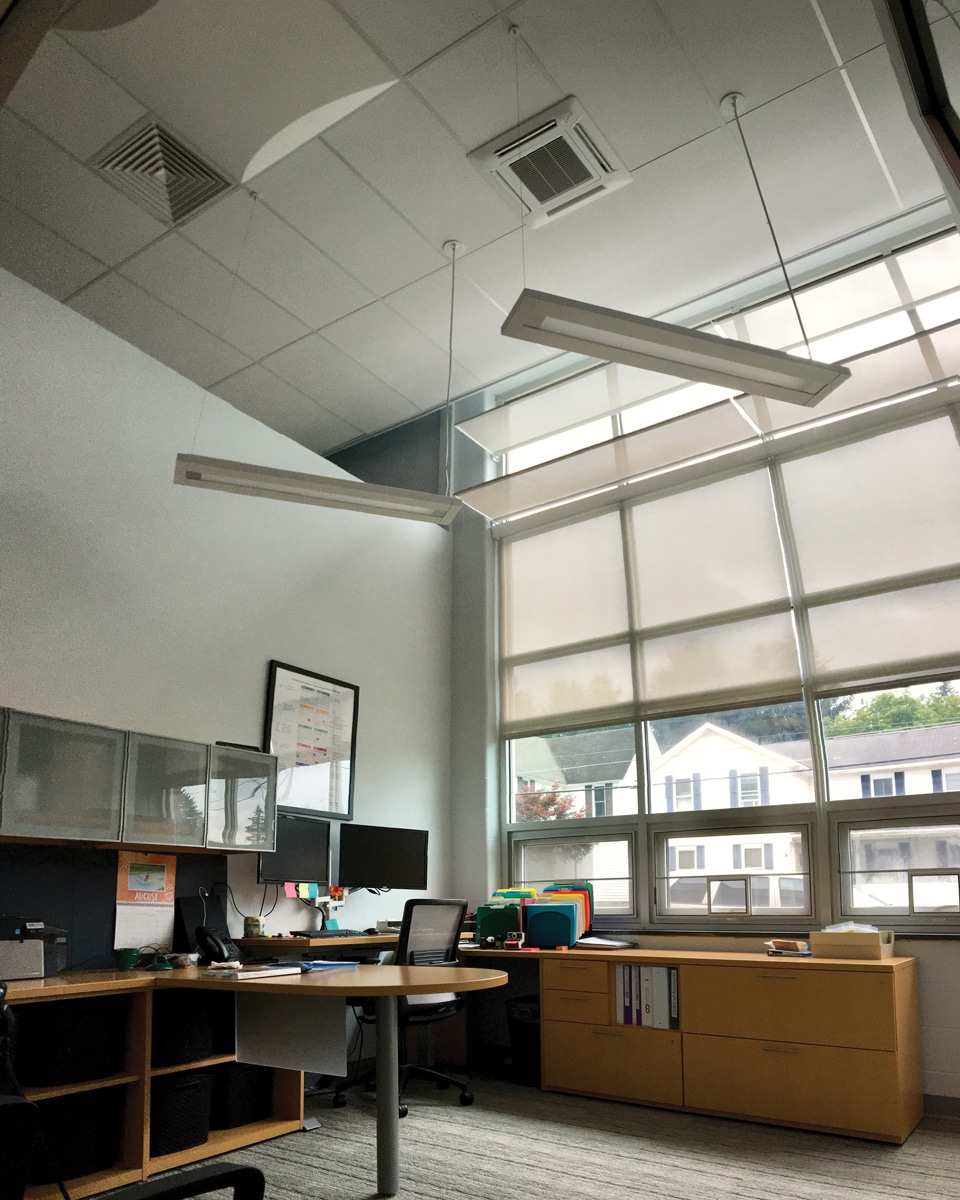
[Photo: Courtesy of Indoor Sky]
1. Block Solar Heat Gain
In order for a window treatment to be successful, it needs to keep out heat. Indoor Sky works with only the best suppliers in the industry to choose the high-performance fabric that’s right for a given project. One such fabric used in both shades and lightshelves features metallic thread that increases the amount of solar energy reflected back off the shade and daylight reflected onto the ceiling.
And the results are substantial. Shades can result in energy savings between 21 and 38%, according to the American Council for an Energy-Efficient Economy.
The treatments can be wand or crank operated, motorized, or fully automated—whatever the building owner and architect think is best for the space, Moulton says, because a shade won’t serve its occupants if they never adjust it up and down.
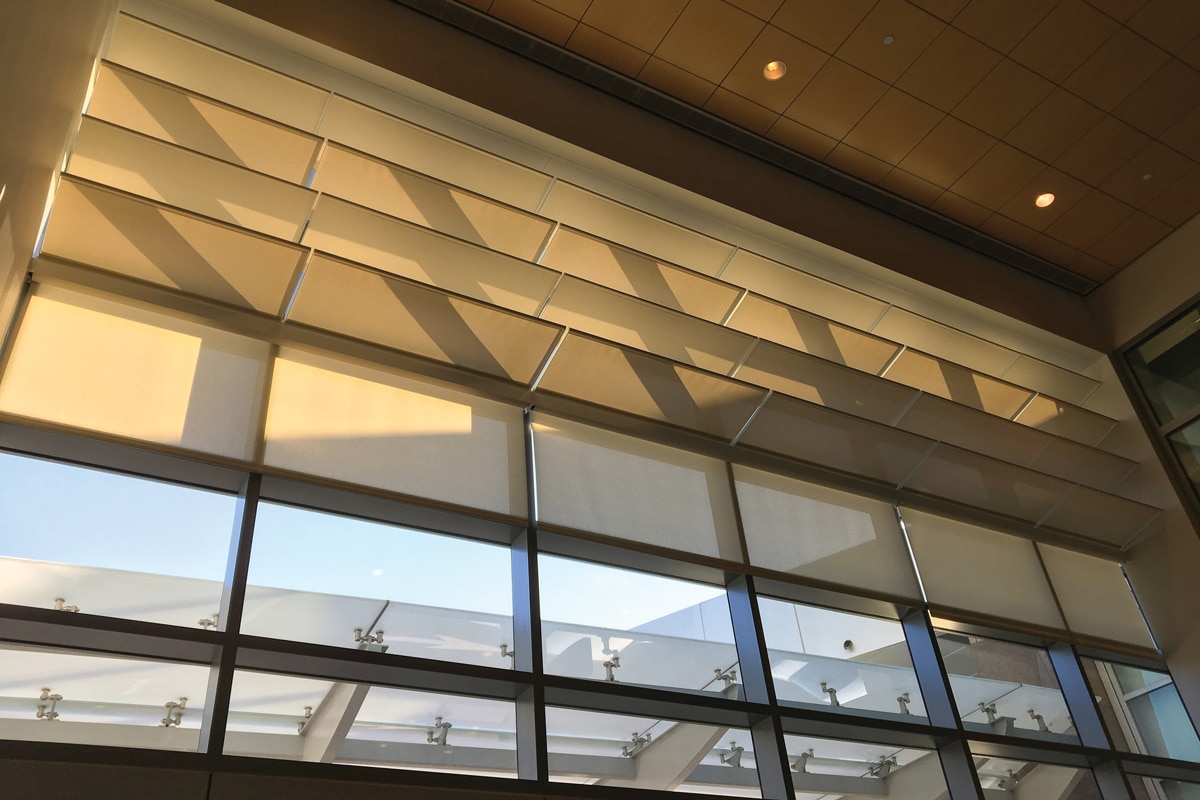
[Photo: Courtesy of Indoor Sky]
2. Maximize the Power of Daylight
The sun’s rays are powerful, both for brightening rooms and moods. The lightshelf taps into this power by “bringing the daylight in and using the ceiling as a luminare to spread the diffused daylight from the ceiling. We’re always trying to use the daylight rather than just block it,” Moulton says. Indoor Sky also makes a Skyliter product designed for large expanses of glass in lobbies or along sloping facades.
Because the treatments reflect the light deeper into the room, they reduce energy costs. Whereas on its own daylight may reach 8 to 10 feet into a particular space, the addition of a lightshelf can increase that range to 10 to 20 feet, Moulton says.
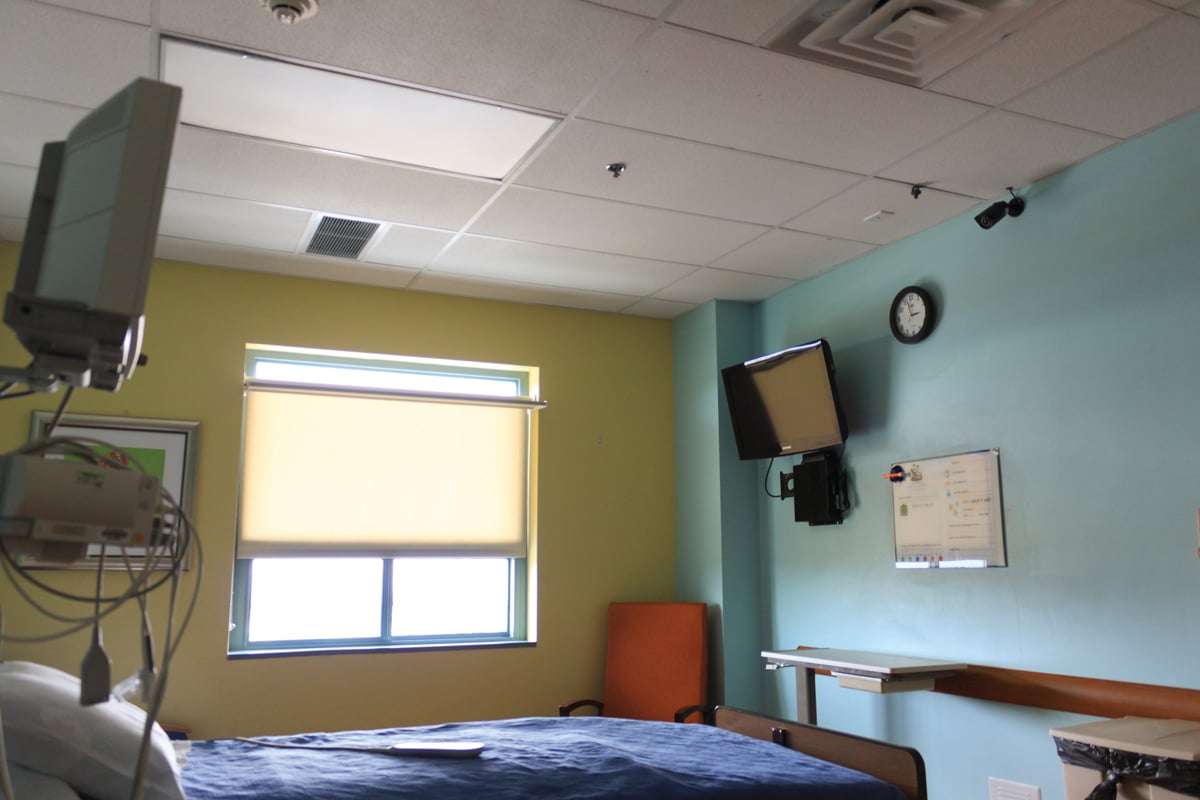
[Photo: Courtesy of Indoor Sky]
3. Eliminate Glare
The Dayliter and Skyliter products allow for glare-free daylight to infuse a space. It’s all the benefits, but none of the downsides.
Moulton has seen the industry evolve in its approach toward fabrics. Over the past decade, some designers have opted for window shades with openness levels of 18% or more, he says. But while these allow lots of natural light in, they also create much maligned glare. Indoor Sky typically recommends fabrics with an openness of 3%. Moulton says that’s often the right balance between letting glare-free light in and being able to see out.
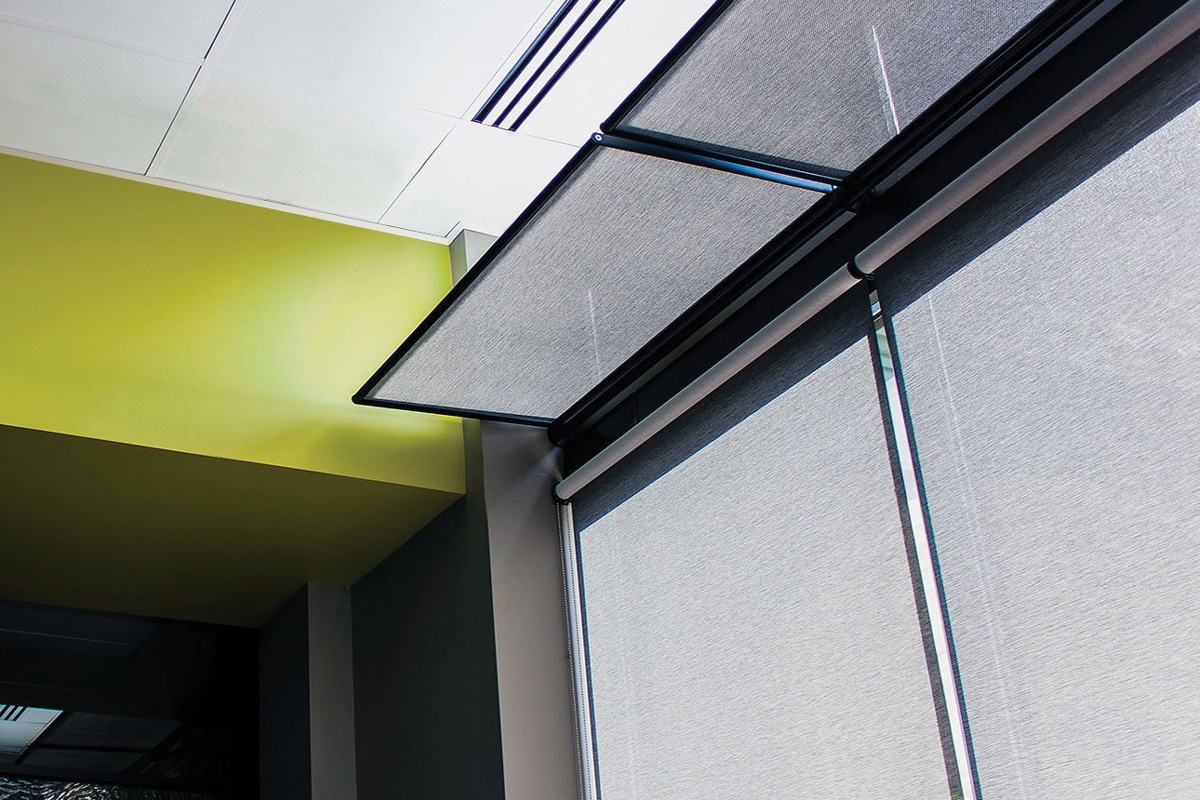
[Photo: Courtesy of Indoor Sky]
4. Keep Your Rhythms in Check
Whether it’s a workplace, business, or hospital, the physiological impact of daylight can’t be discounted. Without an adequate amount of daylight, the circadian rhythms of the body are thrown off. And this, in turn, can lead to stress, reduced productivity, and fatigue.
A well-designed daylighting system can help prevent these negative outcomes. With Indoor Sky’s lightshelves, health-boosting daylight is reflected into the space, allowing occupants to keep their bodies in tune with their natural rhythms. It’s particularly important to get daylight into the space at the right time of day, especially the morning hours, Moulton says.
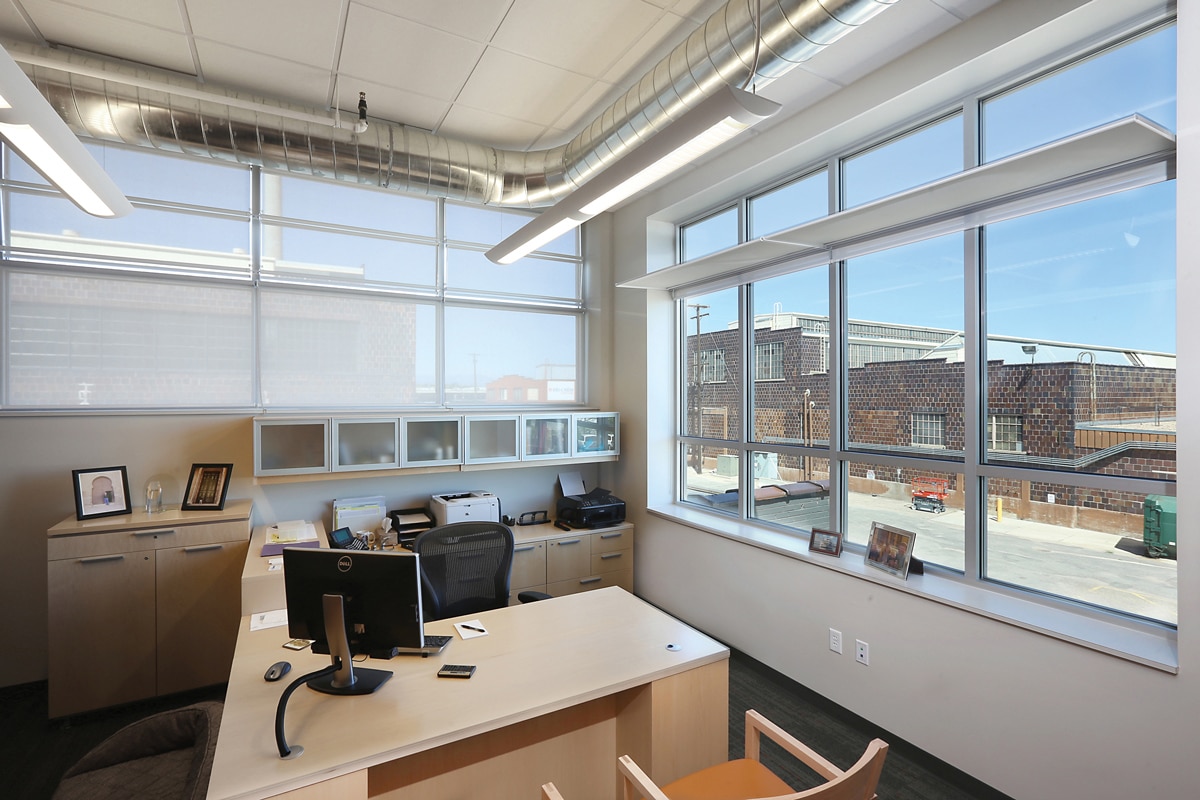
[Photo: Courtesy of Indoor Sky]
5. Add Architectural Interest
No longer is a window treatment a two-dimensional affair. With a fully operable lightshelf, you get a refined style while diffusing the light. And with both the Dayliter and Skyliter systems, you can create a tiered structure that brings visual interest to your space. Where once there was nothing but a plain window, the addition of a lightshelf can add the dramatic interest a room needs.
Whether you’re motivated to save energy, enhance productivity, or simply make a space more beautiful, an integrated shade and daylighting solution may be just the solution you’re looking for.


